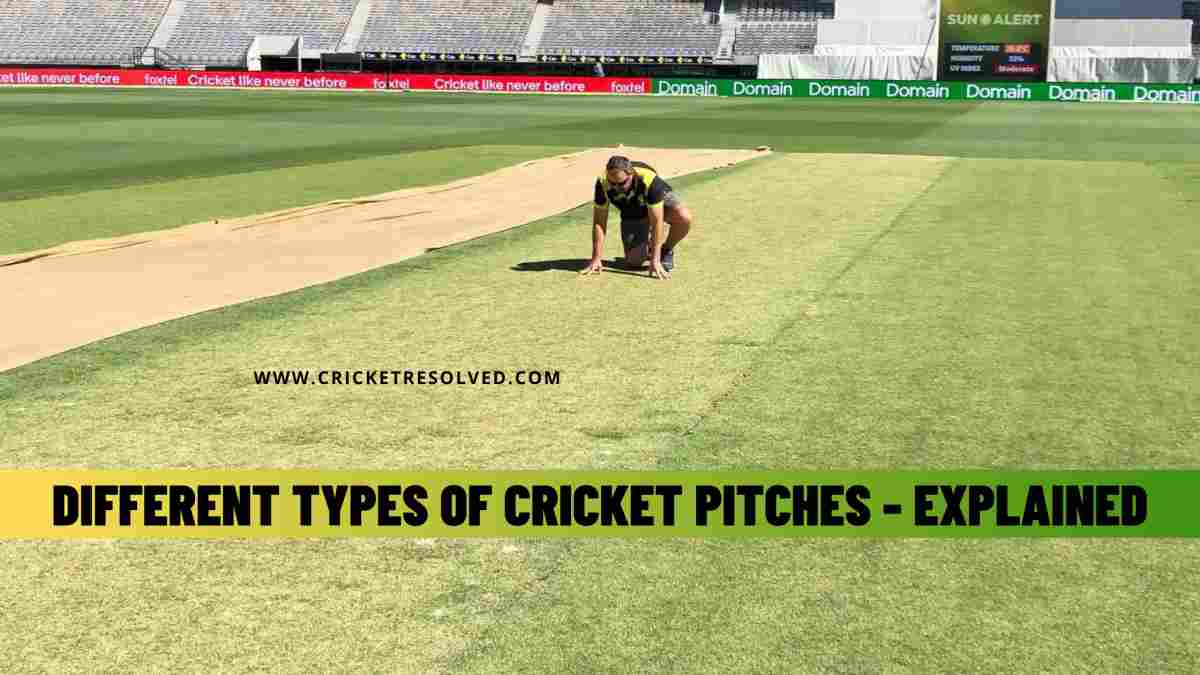
If you have been following cricket for a long time, then you must have seen commentators sharing the pitch report before the start of a match. During the report, they describe what type of pitch will be used for that particular match.
And there are 6 different types of pitches we get to see in cricket, all with different characteristics. So, in this article, let’s look at the different types of cricket pitches.
Types of Cricket Pitches
Flat Pitch
With the rising popularity of T20 cricket, flat pitches are becoming a regular affair in T20 matches to aid batters. Now, you must have gotten a bit of an idea about what a flat pitch is all about.
The flat tracks are a bit soft, with no presence of grass cover, cracks, or any rough patches that help pacers and spinners. Batters enjoy batting on such surfaces, as they get to hammer huge scores.
Read more about flat pitches here.
Green Pitch
As the name suggests, these pitches are green, thanks to the presence of grass cover on top of the surface. You will see such pitches being prepared in England or New Zealand for Test matches.
The green pitches help fast bowlers to a great extent with the new ball, which can potentially trouble the batters. And such pitches can offer a fair contest between bat and ball as the ball becomes older, helping batters score runs.
Also Read | What is the Difference Between a New Ball and an Old Ball in Cricket?
Wet Pitch
Wet pitches are generally not prepared with any specific intention, but you can see them in some exceptional cases. A pitch can become wet or sticky due to the surface being under covers for a longer time due to rain.
Such pitches are not easy to bat on due to the ball sticking in the surface and the invariable bounce it generates.
Dry Pitch
Now, a dry pitch is the complete opposite of a wet pitch. The pitch doesn’t have any moisture and might develop cracks over the course of the match.
Batters won’t find any difficulties while batting on such surfaces. But if a bowler hits one of the cracks on the pitch, it might deviate the ball, adding a surprise element for the batters.
Dusty Pitches
You will see dusty pitches more often in the subcontinent countries. Such pitches are not heavily rolled, leaving them with patches of dust on them.
The dusty pitches help spinners generate enormous spin, which can potentially lead to batters getting out. Fast bowlers, on the other hand, don’t get much help from the surface, leaving them hapless on dusty pitches.
Dead Pitch
A dead pitch is also similar to a flat pitch, with nothing much to offer for bowlers. These pitches can generate high-scoring matches with no grass or moisture present on the surface.
However, a dead pitch can throw challenges at batters as the surface starts deteriorating and developing cracks. The pitch might offer an invariable bounce, with high chances of batters either getting hit on their bodies or losing their wickets.



Leave a Reply